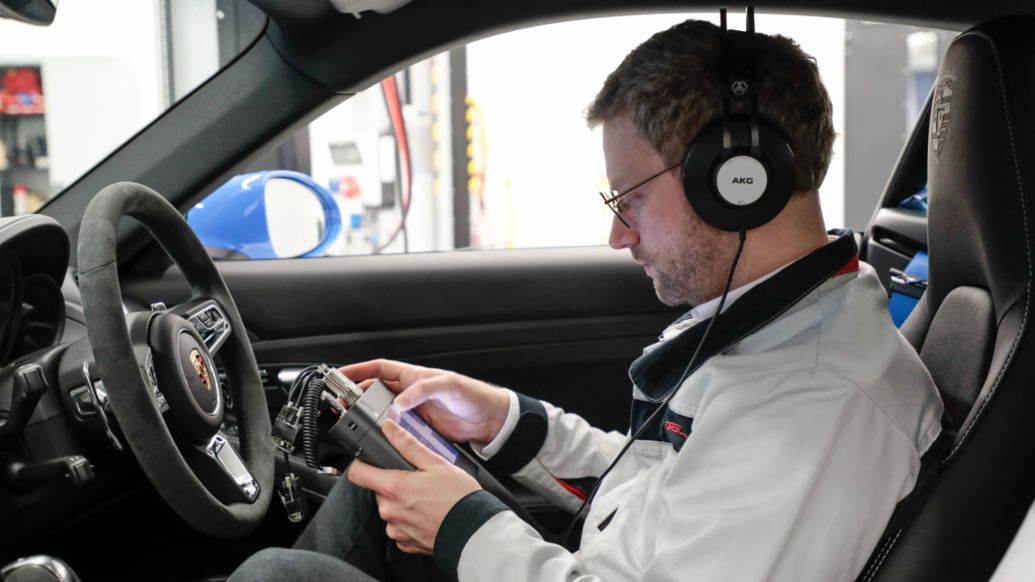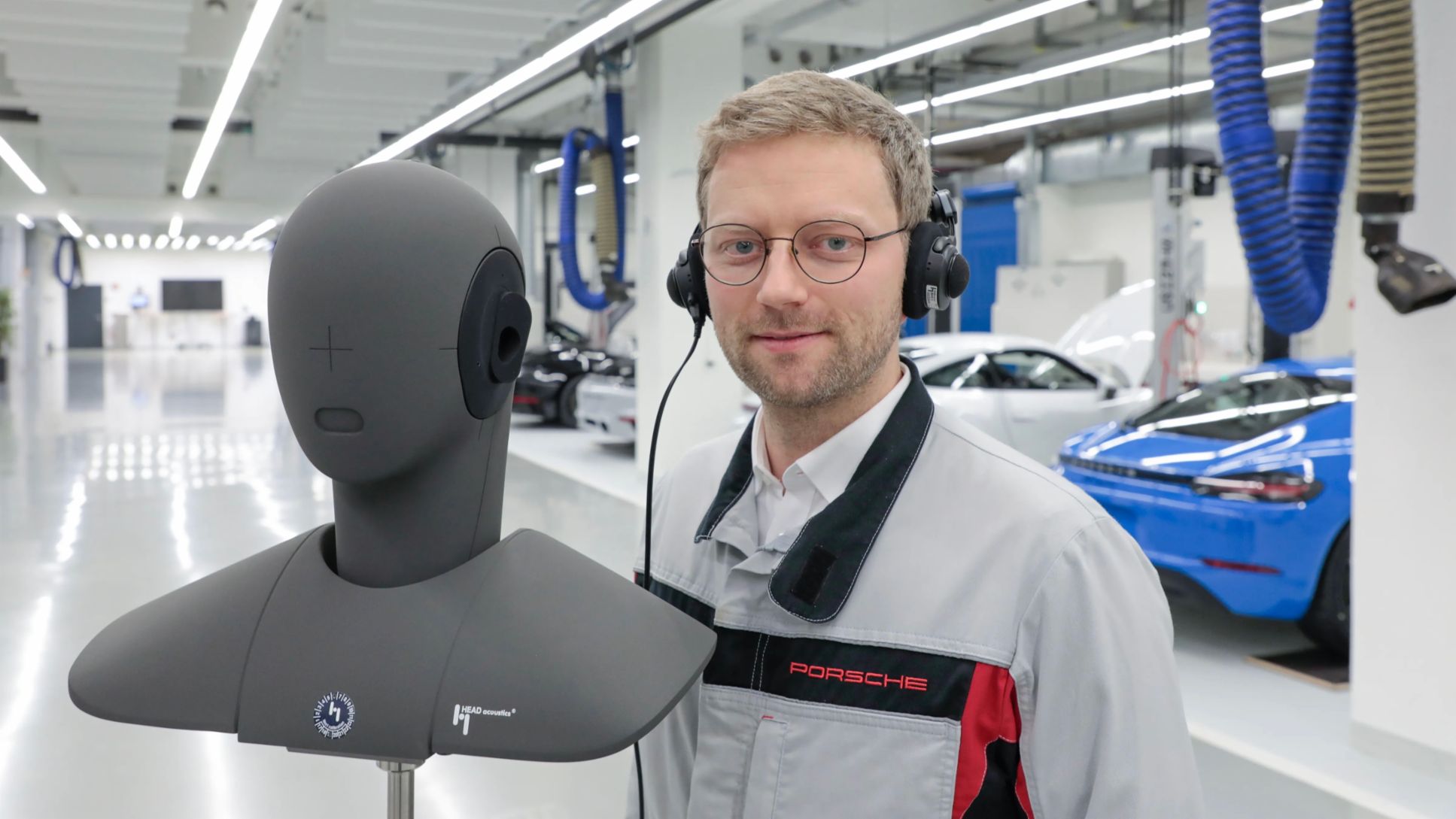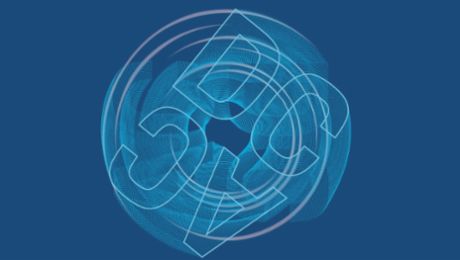A closing door, an engine warming up, and the windshield wipers gliding over the windshield — in a vehicle, there are countless sound sources. As a driver, you tend to take little notice of them. Only when something unusual rattles, thuds or crunches do you pay attention and wonder: is something not right here?
However, in a Porsche, all the natural, overlooked sounds produced during normal operation are meticulously harmonized. And not everything is truly overlooked. Some even contribute to the unique Porsche sound. To create this sound and make a journey in a Porsche an impressive and special experience, there are people like David Sadowski.
Sadowski is an acoustic engineer and works at the Zuffenhausen site in quality assurance and analysis. He has been with Porsche since 2015 and previously worked at the Weissach development site. Acoustics play a crucial role there, even in the pre-series of a model. Numerous vibration technicians and acousticians ensure the unique Porsche sound in every new vehicle. In 2018, Sadowski established acoustic quality analysis in Zuffenhausen, where he leveraged his expertise and cross-departmental measurement techniques.
Meet Sam — the artificial head
One of his most important tools: the artificial head. The artificial head is a so-called sound acoustic module, and his human colleagues affectionately call him ‘Sam’ for short. Sam has all the acoustically relevant components of an upper body and an outer ear. This guarantees a natural listening impression, which provides the best conditions for evaluating product sounds.
Incorporated into him is a binaural measurement system, meaning he has two ears with two ICP® microphones. These microphones have their own preamplifiers and can record in a dynamic range of 130 dB, meaning they can capture especially loud or quiet tones with consistent quality.
“We naturally have a binaural measurement system in our headphones, which we wear as human testers,” explains David Sadowski. “But Sam allows us to take an additional pair of ears on board for every test and place this pair in another location in the car –for example, on the rear seat.” For this, Sam and his stand are strapped to the seat, and he perceives sounds as a human ear would. The acoustic engineers then evaluate his recording.
The various sounds to check on
There are various types of sound analyzed in Sadowski’s department. They receive specifications from the development team and then check the sound design accordingly. They pay attention to the sounds produced by individual components. “The sound of an oil pump, for example, may be overshadowed by the sound of the combustion engine in the overall structure of a vehicle and therefore play a subordinate role,” explains Sadowski. “In an electric vehicle, the oil pump suddenly becomes a relevant factor in the vehicle’s sound design, as the electric motor operates much quieter and masks fewer background sounds — we then have to adjust it so that we can create the typical Porsche sound.”
Even conventional sounds like music or a podcast host are checked. Are all frequencies equally audible in the front right of the vehicle as they are in the rear left? “In quality assurance, we work closely with colleagues in the development department. Every piece of feedback we provide serves to improve the vehicle and the driving experience for the customer,” says Sadowski.
In addition, there are sounds controlled by the driver, such as when someone opens and closes the door. Here too, there are specifications that a Porsche vehicle must meet and that Sadowski’s team checks.

The sound of an anomaly
And of course, there’s the centerpiece of the Porsche sound: the engine. “An electric motor naturally emits a quiet hum. That’s simply the way it is — which is why, for example, the sound of the motor in the electric Taycan is artificially enriched. Our task in acoustic quality assurance is to determine whether the perfect Porsche sound has been created here.”
What consumers simply perceive as part of Porsche quality is an extremely elaborate process. Sam alone logs 2,000 kilometers of test drives on the road each year, helping to find the right sound compositions –or clues as to where something doesn’t sound as it should.
If a vehicle makes unusual noises during a test, recording the faulty noise using the artificial head is the most efficient way to identify the cause of anomalies. “By correlating the vibrations of the components and the interference in the interior, we can clearly determine the parts that cause disturbing sound,” explains Sadowski. In close collaboration with the development team, efforts are then made to fix the problem and eliminate the noise –so that in the end, only one thing remains: the sound of a flawless Porsche.”



